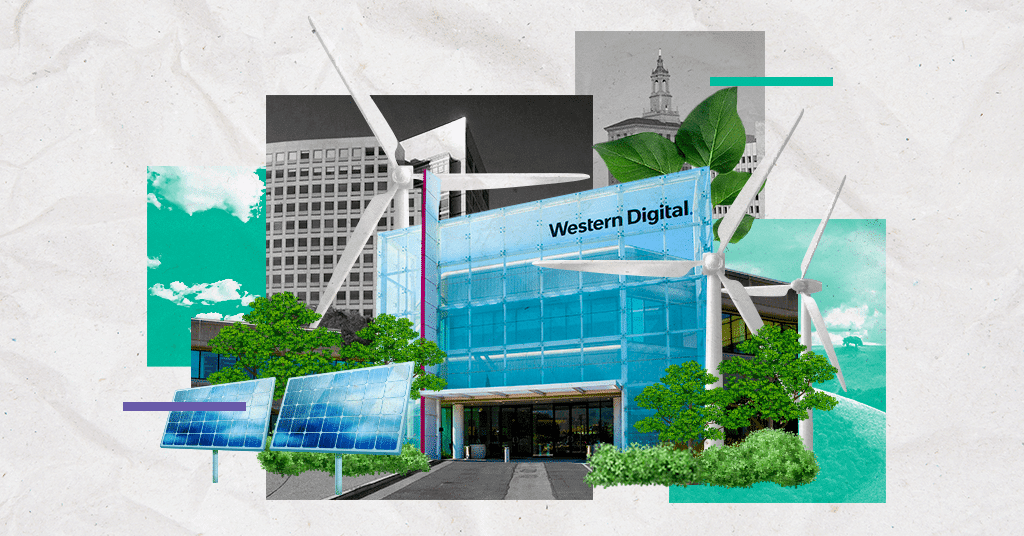The effects of climate change are becoming more palpable around the globe. A recent report from the United Nations stresses the gravity of the situation, detailing global warming’s troubling trajectory. The data makes it clear: taking care of our planet for our communities worldwide and for future generations requires taking action today.
In recognition of the urgent need to address climate change, Western Digital has made a commitment to reduce its emissions footprint, setting reduction targets that have been approved by the Science Based Targets initiative (SBTi)—an alliance between the non-profit, CDP, the United Nations Global Compact, World Resources Institute, and the World Wide Fund for Nature that helps companies set forth and validate emissions targets.
“Western Digital is committed to sustainable operation,” said Josh Parker, who serves as senior director of corporate sustainability at Western Digital. “We believe that it’s the right thing to do, both individually and as a company.”
Western Digital’s reduction targets tackle both operational emissions, which are related to direct fuel and electricity consumption, and indirect emissions, specifically focusing on the energy that is consumed when customers use its products.
By 2030, Western Digital aims to reduce operational emissions by 42% and emissions intensity due to use of its products by 50%, in comparison to baseline levels from 2020.
“Our targets are aligned with the aggressive goal of limiting global warming to 1.5°C above pre-industrial levels,” said Parker. This number of 1.5°C comes from the 2015 Paris Agreement, which determined the degree to which rising temperatures must be limited to circumvent climate change’s severest consequences.
In a press release, Alberto Carrillo Pineda, managing director of science based targets at CDP, commended the company for taking this important step.
“We congratulate Western Digital on setting science-based targets consistent with limiting warming to 1.5°C, the most ambitious goal of the Paris Agreement,” said Carrillo Pineda. “By setting ambitious science-based targets grounded in climate science, Western Digital is taking action to prevent the most damaging effects of climate change.”
Making progress
Currently, Western Digital is directing its efforts towards improving energy usage at its offices and manufacturing facilities across the globe. To make these improvements, the company is pursuing several different approaches.
“Increasing energy efficiency at our operations is one way for us to reduce our emissions,” said Parker. He noted that this can be as straightforward as making sure machines and lights are turned off when they are not in use but can be as involved as streamlining an entire manufacturing process.
“Our Global Operations and Corporate Real Estate teams are doing great work to review areas where we can implement better electricity practices and optimize processes at our facilities,” he said.
The company is also invested in increasing its use of renewable energy. “Reducing our reliance on traditional energy by adopting renewable energy, through on-site solar or direct procurement, is a key method for us to reach our targets,” said Parker.
Several sites are already using renewable energy to power their operations. “As of this year, our locations in Northern California, including our headquarters and manufacturing sites, are running on 100% renewable energy,” said Parker.
He added, “Our factory in Shenzhen, China, runs on 100% wind power, and we’re continually evaluating options for our other sites around the world.”
Taking a closer look
In addition to this work to cut emissions from the company’s operations, there is another area that Western Digital is taking a closer look at to achieve its goals: its products.
“Any improvement in product efficiency helps us to reduce our indirect emissions,” said Parker. Lifecycle assessments provide a means for the company to track the emissions associated with specific products.
“Our Quality teams are developing lifecycle assessments to internally measure the impacts of our products,” said Parker. “This helps us to understand the impact of a product at each phase of its lifecycle, from when it’s being manufactured to when it’s being used by a customer.”
“This data can help us identify the best opportunities for innovation in engineering, research and development to improve the energy efficiency of each of our products while increasing storage capacity, mitigating these impacts in a targeted, prudent way.”
An active role
Parker explained that many groups are looking to companies to take an active role in combating climate change.
“There is growing momentum for a clear commitment to sustainable business practices,” he said. “Our investors, customers, and employees care that we are a responsible company, a sustainable company. This includes having a strong climate strategy.”
According to Parker, customers are keenly interested in the company’s sustainability efforts. “Our customers are raising their sustainability-related expectations of their business partners,” he said.
“Our customers care because they inherit our emissions when they buy our products. Any reduction in our emissions helps reduce their emissions. By committing to these science-based targets, we are taking part in this collective effort towards substantive, real progress.”
What lies ahead
Climate change stands as one of the most pressing matters of our time. It will require commitment and resolve today to change what lies ahead. “We have a limited window of time to avert the most devastating impacts of climate change,” said Parker, “so we must act now.”



